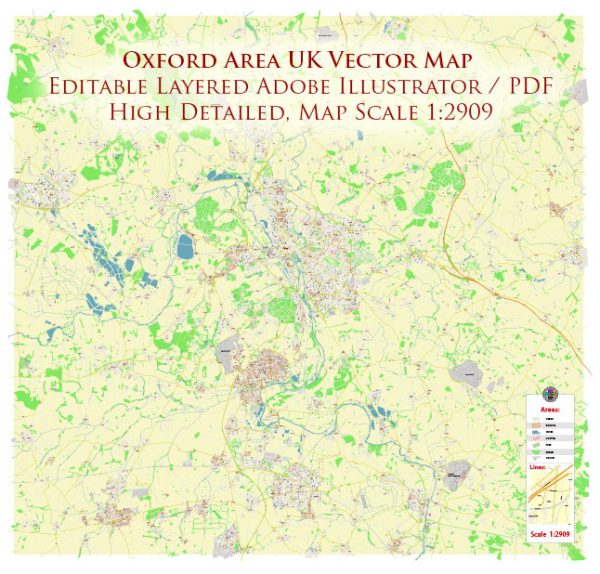The history of urban development in the Oxford area, located in the United Kingdom, is rich and spans over many centuries. Oxford is renowned for its historic university, which has played a significant role in shaping the city and its surroundings. Here is a brief overview of the history of urban development in the Oxford area:
- Early History: The area around Oxford has been inhabited since ancient times, with evidence of settlement dating back to the Saxon period. The location’s strategic position on the River Thames made it an important crossing point and contributed to its early development.
- Medieval Period: Oxford’s history as a center of learning and academia began in the 12th century when the University of Oxford was established. The university had a profound impact on the city’s growth, attracting scholars, students, and religious institutions. The medieval period saw the construction of many colleges, churches, and academic buildings, shaping the distinctive architectural character of the city.
- Tudor and Stuart Eras: Oxford continued to flourish during the Tudor and Stuart periods. The city’s population grew, and more buildings were erected. The Bodleian Library, one of the oldest libraries in Europe, was founded in the early 17th century, reflecting the intellectual and cultural significance of Oxford during this time.
- 18th Century: The 18th century brought about further expansion and development. The Radcliffe Camera, a prominent example of neoclassical architecture, was completed in 1749 as part of the Bodleian Library. The city’s layout evolved, and streets were laid out in a grid pattern in some areas.
- 19th Century: The Industrial Revolution had a significant impact on urban development in the 19th century. Oxford experienced growth and industrialization, leading to changes in its economic and social structure. The expansion of the railway network connected Oxford to other parts of the country, facilitating trade and transportation.
- 20th Century: The 20th century brought both challenges and opportunities for Oxford. Urban planning efforts aimed to preserve the city’s historic character while accommodating modern needs. The establishment of new residential areas and the expansion of educational facilities continued to shape the urban landscape.
- Contemporary Period: In recent decades, Oxford has faced the challenges of modern urbanization, including traffic congestion and housing demands. Efforts have been made to balance the preservation of the city’s historic core with the need for sustainable development.
Throughout its history, Oxford’s urban development has been closely tied to its academic and cultural institutions. The city’s historic buildings, including the colleges and libraries, contribute to its unique charm and draw visitors from around the world. Urban planning initiatives aim to protect the historical integrity of the city while adapting to the changing needs of a modern society.


 Author: Kirill Shrayber, Ph.D.
Author: Kirill Shrayber, Ph.D.